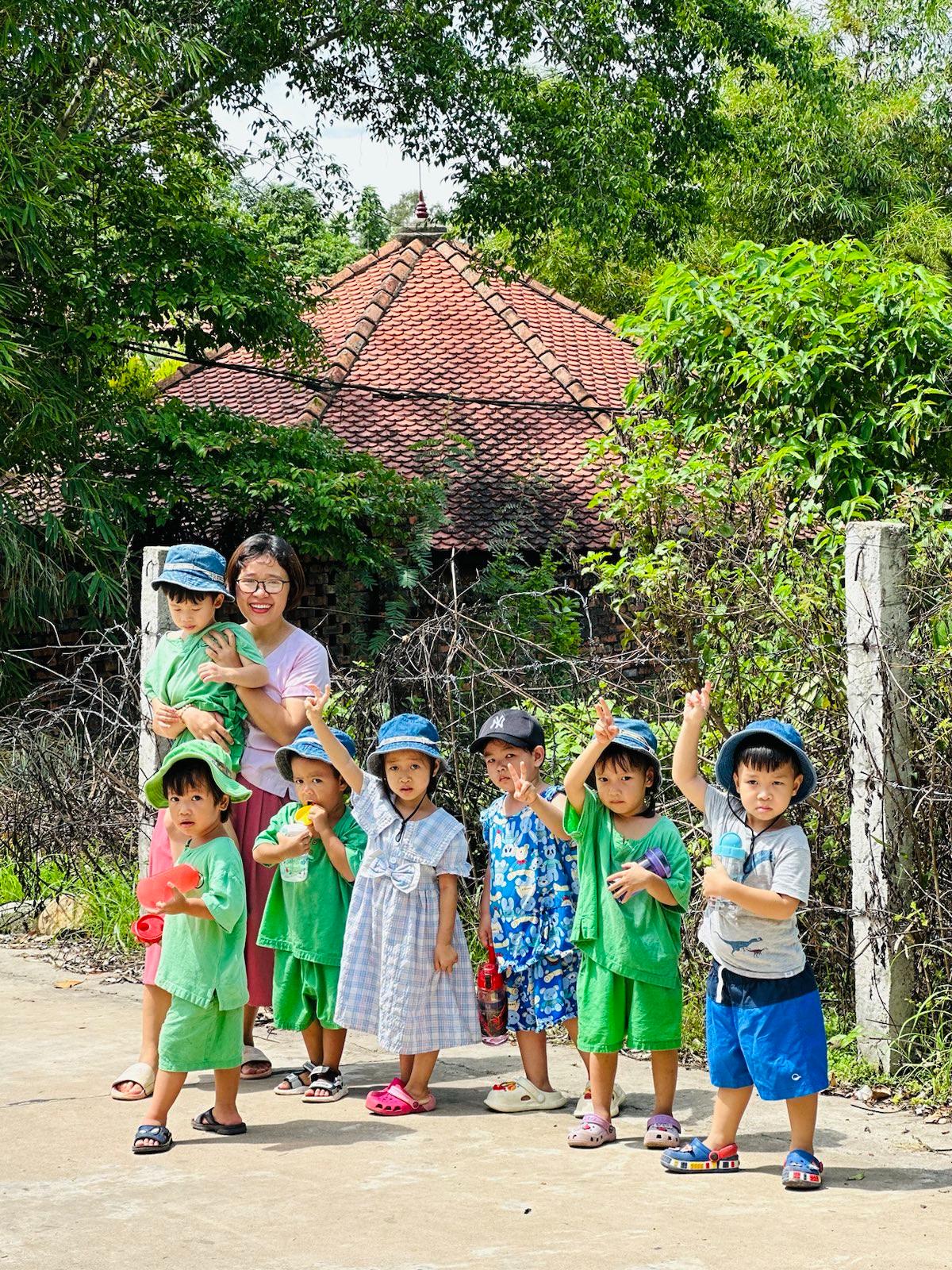Adolescent Class & Inclusive Kindergarten

The Peaceful Bamboo family is also the home of an inclusive Kindergarten and a class for young adolescents living with special needs.
In July 2017, Tinh Truc Gia took on a new challenge by expanding its facilities to accommodate young adolescents.
A few years after TTG had opened, the team and directors became aware of the growing number of families in distress due to the impact of their adolescent’s disability on daily life and its organisation. Indeed, many parents of adolescents living with disabilities had to stop working in order to care for their adolescent’s needs. It is out of this realization that the adolescent class project was born, in order to relieve the suffering of these families.
The newly built space, known as the adolescent sector, is now home to three young girls and seven boys, with ages ranging from 12 to 18 years old.
In TTG’s adolescent class, the day begins with a community-wide morning circle, including announcements, songs, and a story. The classroom activities involve mindful yoga, learning, emotional expression, and creativity. After lunch, they explore various workshops and end the day with a gratitude circle before going home.

In 2015, TTG opened its Waldorf inclusive Kindergarten, housed in a charming, round-shaped building.
TTG Kindergarten welcomes sixteen energetic children daily, including three with special needs.
The playground is a lively space for imaginative play, filled with joy and laughter. Lessons include singing and playful yoga movements. The children also engage in painting, modeling, cooking, and gardening. After a well-deserved nap, the afternoon features small plays and puppet shows. The day concludes with parents picking up their children at the TTG playground.

Testimony from the adolescent class : the Papaya class
“When I thought of naming the teenage class, the word Đu đủ (meaning Papaya) immediately came to mind; yet it took me a while to persuade myself of this choice. Why Đu đủ? It’s a tropical fruit that we love, and it literally means “almost enough”. That’s the image I have of class: we’re lucky enough to be just “almost enough”, not enough, so we’re motivated to improve every day.
If you look deeply into a pawpaw tree, you’ll see the elements of poetry, music and visual art manifest. The tree looks artistic. Its trunk is tall and straight. The foliage spirals up the stem like a green umbrella. The leaves have the softness of wavy lines, the rigidity of sharp angles and a perfect, harmonious symmetry. The tree is musical. If you knock on a fallen pawpaw trunk, you might be surprised by what you hear: a resounding, elegant sound. A few taps would be enough to make you happy. The tree is poetic. Its name speaks for itself: đu đủ is a melodic, pleasing word.
So how does the class resonate with pawpaw and the idea of “almost enough”? We express ourselves a lot through visual arts. Painting and drawing are not just an exercise of the hands, but also about feeling each shape and color as a way of conveying thoughts and emotions. Yet nothing is easy. Our students have to strive to make a straight or curved line on paper. They also learn to practice the way they walk and move their bodies, because the line must first come out of them, bodily. Each drop of color on the paper reveals their inner life: their joy, their sadness or anger. As a teacher, I can feel the inner worlds of each student in the way they paint.
How could we experience classroom life without music? There are friends who love to sing, and those who find it difficult but can clap their hands or feet to the beat. Even if they can’t always hit the beat at the right time, they still like to stand in front of everyone and do it. Sometimes I feel jealous because they are so sure of themselves; when I was their age, I was so fearful that I always avoided standing in front of people.
We like to read poems aloud. It takes a while for the students to learn the poems by heart; we repeat them not in days but in months. And once they can say them, they do so with such pride that seems to declare, “This is my poem, I did my best to learn it, and now I’m saying it myself.” They don’t just talk, they also express the poems through supple movements and acting in plays. Whether they can read or not, whether they move with ease or with difficulty, they can always learn to express the poem together.
The pawpaw has just one body reaching up to the sky, bearing countless beautiful rounds of foliage, fragrant flowers and sweet fruit. I hope that, like the papaya tree, my students will forge an upright spirit and a strong will over the years spent in the classroom, so that one day they can soar into the vast space, where they will reach their full potential and beauty. In the roots, in the stem, in the leaves and in the center of the papaya fruit, we see spaces of emptiness, of air. I hope that when my students come to class, they can always keep their minds as peaceful as these empty spaces. And just as air is an indispensable element of life, carefully hidden inside the papaya tree, the students in the Papaya class are the indispensable treasures of life.”
Nguyen Thi Da Thao, teacher in the adolescent class






